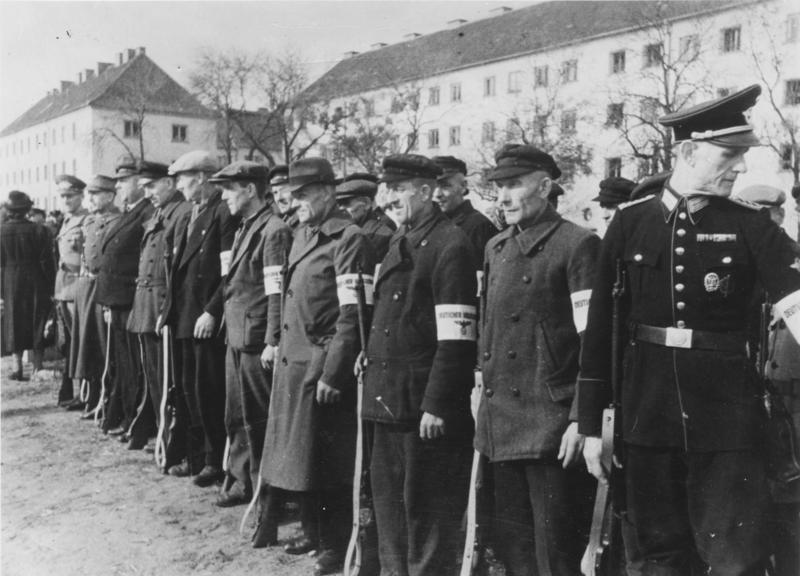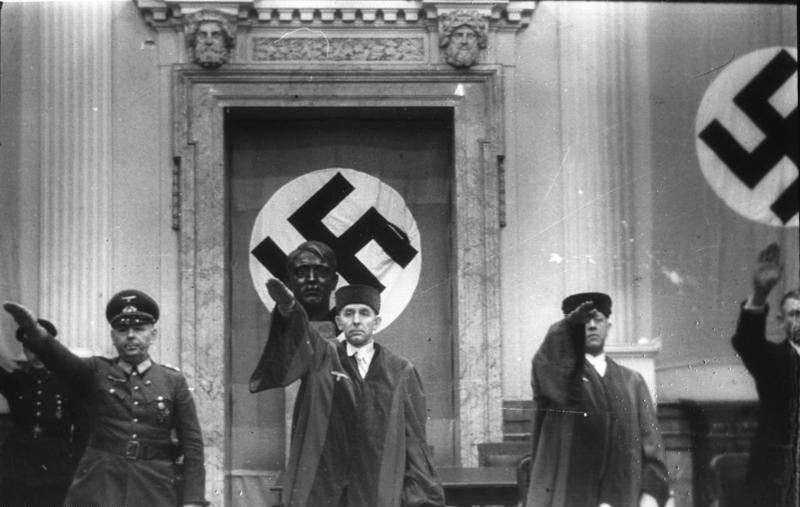|
German Casualties In World War II
Statistics for German World War II military casualties are divergent. The wartime military casualty figures compiled by German High Command, up until January 31, 1945, are often cited by military historians when covering individual campaigns in the war. A recent study by German historian Rüdiger Overmans found that the German military casualties were 5.3 million, including 900,000 men conscripted from outside of Germany's 1937 borders, in Austria and in east-central Europe, higher than those originally reported by the German high command. The German government reported that its records list 4.3 million dead and missing military personnel. According to the German government ''Suchdienste'' (Search Service) there were 300,000 German victims (including Jews) of Nazi racial, political and religious persecution. This statistic does not include 200,000 German people with disabilities who were murdered in the Action T4 and Action 14f13 euthanasia programs. German sources for military ... [...More Info...] [...Related Items...] OR: [Wikipedia] [Google] [Baidu] |
Deutsche Dienststelle (WASt)
The was a German government agency based in Berlin which maintained records of members of the former German who were killed in action, as well as official military records of all military personnel during World War II (ca. 18 million) as well as naval military records since 1871 and other war-related records. Formerly called the , the agency also provided information about the fate of foreign and German soldiers as well as prisoners of war in Germany. Such information is used for civil proceedings, for an official register of war graves, for historical research and as biographical and genealogical purposes. The agency was established on 26 August 1939 and had been an agency of the state government of Berlin since 1951. the agency has been merged with the German Federal Archives (german: Bundesarchiv). The agency is a major source for genealogical and scientific research in various areas. History It started its work on 26 August 1939 as , part of the , under the auspices of Arti ... [...More Info...] [...Related Items...] OR: [Wikipedia] [Google] [Baidu] |
Federal Ministry Of Defense (Germany)
The Federal Ministry of Defence (german: Bundesministerium der Verteidigung, ), abbreviated BMVg, is a top-level federal agency, headed by the Federal Minister of Defence as a member of the Cabinet of Germany. The ministry is headquartered at the Hardthöhe district in Bonn and has a second office in the ''Bendlerblock'' building in Berlin. According to Article 65a of the German Constitution (''Grundgesetz)'', the Federal Minister of Defence is Commander-in-chief of the ''Bundeswehr'', the German armed forces, with around 265,019 active soldiers and civilians. Article 115b decrees that in the state of defence, declared by the Bundestag with consent of the Bundesrat, the command in chief passes to the Chancellor. The ministry currently has approximately 3,730 employees. Of these, 3,230 work in Bonn while around 500 work in the ''Bendlerblock'' building in Berlin. Organization On April 1, 2012, the Federal Ministry of Defence (DEU MOD) changes its organization to the followin ... [...More Info...] [...Related Items...] OR: [Wikipedia] [Google] [Baidu] |
Statistical Sample
In statistics, quality assurance, and survey methodology, sampling is the selection of a subset (a statistical sample) of individuals from within a statistical population to estimate characteristics of the whole population. Statisticians attempt to collect samples that are representative of the population in question. Sampling has lower costs and faster data collection than measuring the entire population and can provide insights in cases where it is infeasible to measure an entire population. Each observation measures one or more properties (such as weight, location, colour or mass) of independent objects or individuals. In survey sampling, weights can be applied to the data to adjust for the sample design, particularly in stratified sampling. Results from probability theory and statistical theory are employed to guide the practice. In business and medical research, sampling is widely used for gathering information about a population. Acceptance sampling is used to determine if ... [...More Info...] [...Related Items...] OR: [Wikipedia] [Google] [Baidu] |
University Of Freiburg
The University of Freiburg (colloquially german: Uni Freiburg), officially the Albert Ludwig University of Freiburg (german: Albert-Ludwigs-Universität Freiburg), is a public university, public research university located in Freiburg im Breisgau, Baden-Württemberg, Germany. The university was founded in 1457 by the House of Habsburg, Habsburg dynasty as the second university in Austrians, Austrian-Habsburg territory after the University of Vienna. Today, Freiburg is the List of universities in Germany#Universities by date of establishment, fifth-oldest university in Germany, with a long tradition of teaching the humanities, social sciences and natural sciences and technology and enjoys a high academic reputation both nationally and internationally. The university is made up of 11 faculty (division), faculties and attracts students from across Germany as well as from over 120 other countries. Foreign students constitute about 18.2% of total student numbers. The University of Fr ... [...More Info...] [...Related Items...] OR: [Wikipedia] [Google] [Baidu] |
German Armed Forces Military History Research Office
The Military History Research Office (german: Militärgeschichtliches Forschungsamt, MGFA) is an office of the ''Bundeswehr'' located at Potsdam, Germany. Following a reorganisation in 2013, MGFA was consolidated with the to become the Center for Military History and Social Sciences of the ''Bundeswehr''. Mission The Military History Research Institute was the central federal institution in Germany for all questions about German military history. Its mission included empirical, archive-based research in accordance with the accepted rules and standards of general historiography. It was a member of the network of historical research institutions of the Federal Republic of Germany outside universities. The institute fostered the cooperation with a large number of research institutes in Germany and abroad and contributed to topical debates among experts in military history. Museums Three military history museums are under the administrative and technical command of the MGFA. The ... [...More Info...] [...Related Items...] OR: [Wikipedia] [Google] [Baidu] |
Volkssturm
The (; "people's storm") was a levée en masse national militia established by Nazi Germany during the last months of World War II. It was not set up by the German Army, the ground component of the combined German ''Wehrmacht'' armed forces, but by the Nazi Party on the orders of Adolf Hitler and established on 25 September 1944. It was staffed by conscripting males between the ages of 16 and 60 years, who were not already serving in some military unit. The ''Volkssturm'' comprised one of the final components of the total war promulgated by Propaganda Minister Joseph Goebbels, part of a Nazi endeavor to overcome their enemies' military strength through force of will. ''Volkssturm'' units fought unsuccessful futile battles against the Allied forces at the end of the war and on several occasions, its members participated in atrocities accompanied by German civilians and the Hitler Youth, which were overseen by members of the SS or Gau leaders. Origins and organization The ... [...More Info...] [...Related Items...] OR: [Wikipedia] [Google] [Baidu] |
Die Zeit
''Die Zeit'' (, "The Time") is a German national weekly newspaper published in Hamburg in Germany. The newspaper is generally considered to be among the German newspapers of record and is known for its long and extensive articles. History The first edition of ''Die Zeit'' was first published in Hamburg on 21 February 1946. The founding publishers were Gerd Bucerius, Lovis H. Lorenz, Richard Tüngel and Ewald Schmidt di Simoni. Another important founder was Marion Gräfin Dönhoff, who joined as an editor in 1946. She became publisher of ''Die Zeit'' from 1972 until her death in 2002, together from 1983 onwards with former German chancellor Helmut Schmidt, later joined by Josef Joffe and former German federal secretary of culture Michael Naumann. The paper's publishing house, Zeitverlag Gerd Bucerius in Hamburg, is owned by the Georg von Holtzbrinck Publishing Group and Dieter von Holtzbrinck Media. The paper is published weekly on Thursdays. As of 2018, ''Die Zeit'' has ... [...More Info...] [...Related Items...] OR: [Wikipedia] [Google] [Baidu] |
Percy Ernst Schramm
Percy Ernst Schramm (14 October 1894 – 21 November 1970) was a German historian who specialized in art history and medieval history. Schramm was a Chair and Professor of History at the University of Göttingen from 1929 to 1963. Early life and education Schramm was born to a wealthy and cosmopolitan family in Hamburg, that belonged to the class of Hanseatic families. His father, Max Schramm, was a lawyer, senator and second mayor (i.e. deputy mayor) from 1925 to 1928. His grandfather Ernst Schramm (1812–1882) had been a major sugar merchant in Hamburg and Brazil. His mother Olga O'Swald, grandniece of William Henry O'Swald, also belonged to a prominent Hanseatic family. The young Percy served in the German Army during World War I and went on to study history and art history at several of Germany's elite universities, including Hamburg, Munich and Heidelberg. In 1922, he completed his doctoral studies at the University of Heidelberg under the medieval historian Karl H ... [...More Info...] [...Related Items...] OR: [Wikipedia] [Google] [Baidu] |
Hermann Reinecke
Karl Rudolf Ernst Auguste Hermann Reinecke (14 February 1888 – 10 October 1973) generally known as Hermann Reinecke was a German general and war criminal during the Nazi era. As head of the General Office of the Armed Forces in the OKW (Supreme Command of the Wehrmacht) during World War II, he was a major contributor to the prisoner-of-war policy that resulted in the deaths of approx. 3.3 million Soviet prisoners. Reinecke was tried, convicted and sentenced to life imprisonment at the High Command Trial. Military career Reinecke joined the German Imperial Army as a cadet in March 1905. He served throughout World War I during which he was awarded the Iron Cross first class and he was promoted to captain in 1916. He then continued his military service in the Reichswehr with the Army Office of Administration, an infantry regiment and the Reich Defence Ministry in Berlin. He served in the Wehrmacht, providing political training on behalf of the Nazi leadership. In January 1939, ... [...More Info...] [...Related Items...] OR: [Wikipedia] [Google] [Baidu] |




